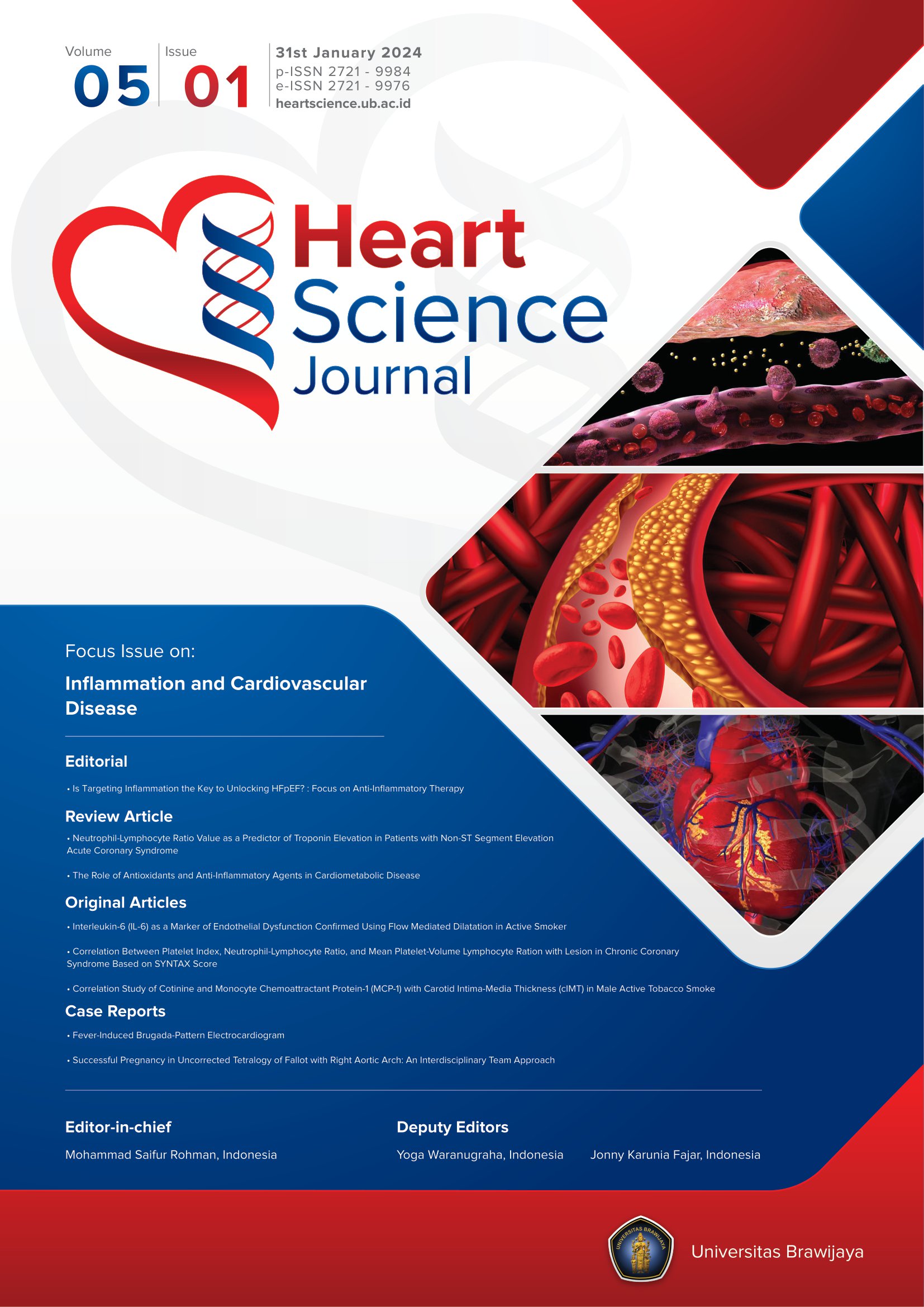When to Return for Usual Activity After ACS The Benefit of Cardiac Rehabilitation
Abstract
Cardiac rehabilitation (CR) can be managed as global long-term care and comprehensive risk reduction of cardiac patients based on preventive care through a professional multi-disciplinary integrated process approach.11 Multidisciplinary CR elements include: patient evaluations, physical activity counselling, exercise training, diet/nutritional counseling, psychosocial management, lipid management, smoking avoidance, management of weight, and regulation of blood pressure. Exercise training if begun at the post-ACS acute phase, would achieve its greatest beneficial effect on the process of LV remodeling in the dysfunctional LV and cardiopulmonary rehabilitation in patients after acute coronary syndrome. Cardiac rehabilitation (CR) can be managed as global long-term care and comprehensive risk reduction of cardiac patients based on preventive care through a professional multi-disciplinary integrated process approach
Keywords
Full Text:
PDFReferences
Heron MP. Deaths: leading causes for 2015. 2017.
Widimsky P, Wijns W, Fajadet J, et al. Reperfusion therapy for ST elevation acute myocardial infarction in Europe: description of the current situation in 30 countries. 2010;31:943-57.
Sørensen JT, Mæng MJCad. Regional systems-of-care for primary percutaneous coronary intervention in ST-elevation myocardial infarction. 2015;26:713-22.
Paffenbarger Jr RS, Hyde R, Wing AL, Hsieh C-cJNEjom. Physical activity, all-cause mortality, and longevity of college alumni. 1986;314:605-13.
Andjic M, Spiroski D, Ilic Stojanovic O, et al. Effect of short-term exercise training in patients following acute myocardial infarction treated with primary percutaneous coronary intervention. 2016;52:364-9.
Ostman C, Jewiss D, Smart NAJC. The effect of exercise training intensity on quality of life in heart failure patients: a systematic review and meta-analysis. 2017;136:79-89.
Zhang Y-M, Lu Y, Tang Y, et al. The effects of different initiation time of exercise training on left ventricular remodeling and cardio- pulmonary rehabilitation in patients with left ventricular dysfunc- tion after myocardial infarction. 2016;38:268-76.
Maessen MF, Eijsvogels TM, Stevens G, van Dijk AP, Hopman MTJEJoPC. Benefits of lifelong exercise training on left ventricular function after myocardial infarction. 2017;24:1856-66.
McGregor G, Gaze D, Oxborough D, O'Driscoll J, Shave RJEJoP, Medicine R. Reverse left ventricular remodelling-effect of cardiac rehabilitation exercise training in myocardial infarction patients with preserved ejection fraction. 2015;52:370-8.
O'Connor GT, Buring JE, Yusuf S, et al. An overview of randomized trials of rehabilitation with exercise after myocardial infarction. 1989;80:234-44.
Korzeniowska-Kubacka I, Bilińska M, Dobraszkiewicz-Wasilewska B, Piotrowicz RJCJ. Hybrid model of cardiac rehabilitation in men and women after myocardial infarction. 2015;22:212-8.
Guidelines ECfS, Corrà U, Piepoli MF, et al. Secondary prevention through cardiac rehabilitation: physical activity counselling and exercise training: key components of the position paper from the Cardiac Rehabilitation Section of the European Association of Cardiovascular Prevention and Rehabilitation. 2010;31:1967-74.
Fallavollita L, Marsili B, Castelli S, et al. Short-term results of a 5-week comprehensive cardiac rehabilitation program after first-time myocardial infarction. 2015;56:311-8.
Løvlien M, Mundal L, Hall‐Lord MLJJocn. Health‐related quality of life, sense of coherence and leisure‐time physical activity in women after an acute myocardial infarction. 2017;26:975-82.
Hedbäck B, Perk J, Wodlin PJEhj. Long-term reduction of cardiac mortality after myocardial infarction: 10-year results of a compre- hensive rehabilitation programme. 1993;14:831-5.
Cai M, Liu Z, Jia D, Feng R, Tian ZJLs. Effects of different types of exercise on skeletal muscle atrophy, antioxidant capacity and growth factors expression following myocardial infarction. 2018;213:40-9.
Greif H, Kreitler S, Kaplinsky E, Behar S, Scheinowitz MJBM. The effects of short-term exercise on the cognitive orientation for health and adjustment in myocardial infarction patients. 1995;21:75-85.
Villafaina S, Giménez-Guervós Pérez MJ, Fuentes-García JPJS. Comparative Effects of High-Intensity Interval Training vs Moder- ate-Intensity Continuous Training in Phase III of a Tennis-Based Cardiac Rehabilitation Program: A Pilot Randomized Controlled Trial. 2020;12:4134.
Bellmann B, Lin T, Greissinger K, et al. The Beneficial Effects of Cardiac Rehabilitation. 2020:1-10.
Paiva SA, Zornoff LAJIJoC. Delayed rather than early exercise training attenuates ventricular remodeling after myocardial infarction. 2013;170:e3-e4.
Woodruffe S, Neubeck L, Clark RA, et al. Australian Cardiovascular Health and Rehabilitation Association (ACRA) core components of cardiovascular disease secondary prevention and cardiac rehabilita- tion 2014. 2015;24:430-41.
Piepoli MF, Corra U, Benzer W, et al. Secondary prevention through cardiac rehabilitation: from knowledge to implementation. A position paper from the Cardiac Rehabilitation Section of the European Association of Cardiovascular Prevention and Rehabilita- tion. 2010;17:1-17.
DOI: https://doi.org/10.21776/ub.hsj.2020.001.04.01
Refbacks
- There are currently no refbacks.
Copyright (c) 2020 Cholid Tri Tjahjono

This work is licensed under a Creative Commons Attribution 4.0 International License.









